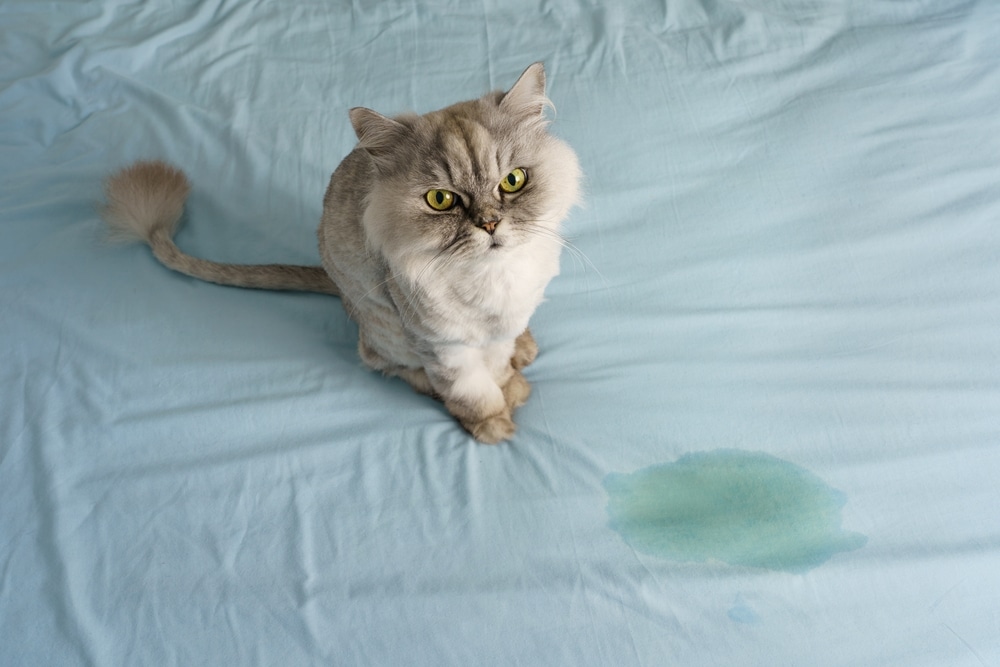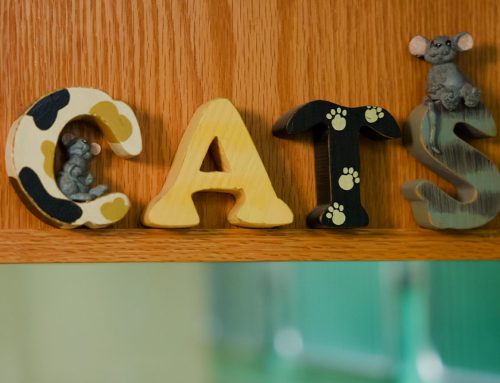When cats first started living with people, they primarily lived outdoors and usually eliminated on soil or sand. Once people learned that indoor cats live longer and healthier lives, they kept them in the house. In addition, people devised a solution to help cats stay neat and tidy inside—the litter box. Each cat is unique and has individual preferences regarding their toilet area, but a few rules can help ensure they accept and reliably use the boxes in your home. Our Roosevelt Animal Hospital team shares tips and tricks for your feline friend’s litter box success.
#1: Choose a larger box than you think your cat needs
Most commercially available cat litter boxes are too small, especially if your whiskered pal is large. The box should be at least one and one-half times your cat’s body length and deep enough to accommodate at least an inch of litter. Plastic storage containers make great litter boxes and offer the option to cover the box or leave it uncovered according to your cat’s preferences. Cut a hole in at least two of the box’s sides to provide easy entry and exit for your feline friend.
#2: Litter box locations matter to your cat
The number and location of your cat’s litter boxes make a big difference to your furry pal. You’ll need at least one box per household cat, plus one extra box. Place each box in a quiet location, away from high-traffic areas, but with easy access. Many people choose basements for the litter boxes to hide them from guests, but your whiskered pal won’t appreciate having to use the stairs each time they have to eliminate—especially if they are older or have arthritis. You should have at least one box on each of your house’s levels, and avoid placing them in corners or closed-off areas where your cat could feel trapped by another approaching pet. Multiple boxes in a single location count as one large box to your cat, so spread them out to give your four-legged friend some options.
#3: Cats prefer soft, clumping, unscented litter
Scented and dusty cat litter can irritate your cat’s lungs and can lead to or exacerbate asthma. Cats like the feel of soft litter under their feet and appreciate the cleanliness that clumping litter provides. Choose a low-dust, unscented litter that is free of synthetic perfumes or natural aromatic oils.
#4: Scoop your cat’s litter box every day, no exceptions.
One of cats’ main reasons for boycotting the litter box is because they are dirty and smelly. Humans dislike eliminating in a previously used toilet that hasn’t been flushed, and your feline friend views a litter box that hasn’t been scooped in the same manner. Scoop solid waste and urine clumps from the box and dispose of them daily. Doing so keeps your cat happy, and cuts down on odors in your home. In addition, by scooping your whiskered pal’s litter boxes each day, you can monitor the quality and quantity of their stools and the size of their urine clumps. You can determine whether your feline friend has loose stools or is constipated, and see whether they are urinating a greater or lesser amount, which could indicate they have a health condition. Completely replace all litter and clean the box with mild soap once every two to four weeks.
#5: Make accommodations for older or arthritic cats
If your cat is older, you should place their boxes in highly accessible locations. If your whiskered pal has mobility issues, you may need to place extra boxes around the house, so one is always nearby. Cut low entry holes into the litter box sides to ensure arthritic and immobile joints don’t hinder your furry pal’s ability to continue using their box.
Troubleshooting litter box issues in cats

Cats may urinate or defecate outside the litter box for various reasons, including medical and behavioral issues. They may have a urinary tract infection (UTI), chronic bladder inflammation, bladder stones, urine crystals, kidney disease, diabetes, inflammatory bowel disease, arthritis, or untreated pain. Stress or anxiety, either alone or in combination with a medical issue, can cause a cat to stop using their litter box. Always consult with our Roosevelt Animal Hospital team to rule out a medical problem before attempting to troubleshoot the issue at home. You may need to try various box types (e.g., covered versus uncovered), litter types (e.g., sand, soil, newspaper), or home locations to determine your cat’s preferences.
Litter box and litter type, box placement, box size, and box cleanliness can impact your whiskered pal’s decision to use—or not to use—the box. You may need to try a few options before you find the winning combination, and stay flexible to ensure you can meet your cat’s needs. If your feline friend is persistently avoiding the litter box, they could have a medical or behavioral issue that needs professional veterinary treatment. Schedule your cat’s appointment with our Roosevelt Animal Hospital team.


















Leave A Comment